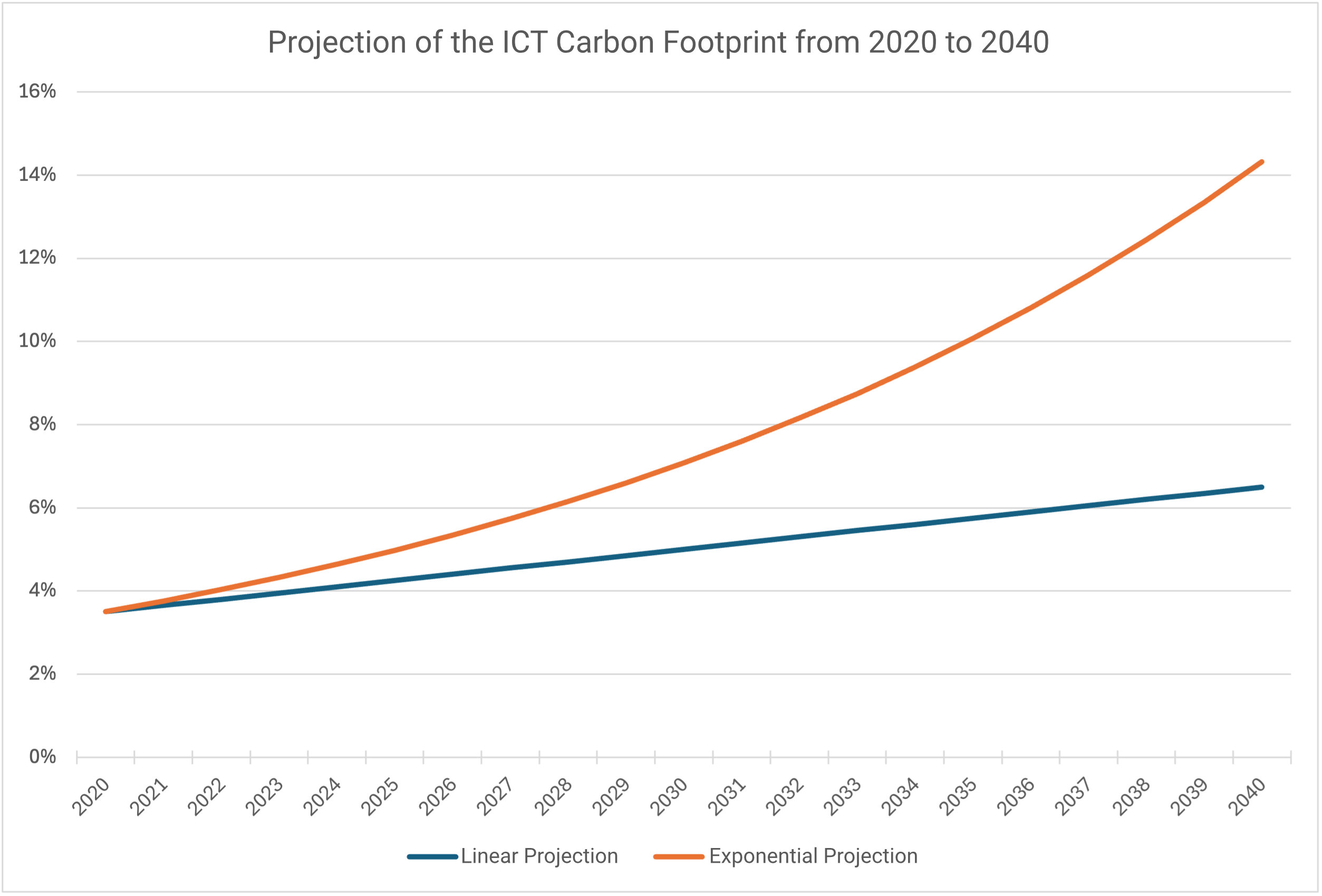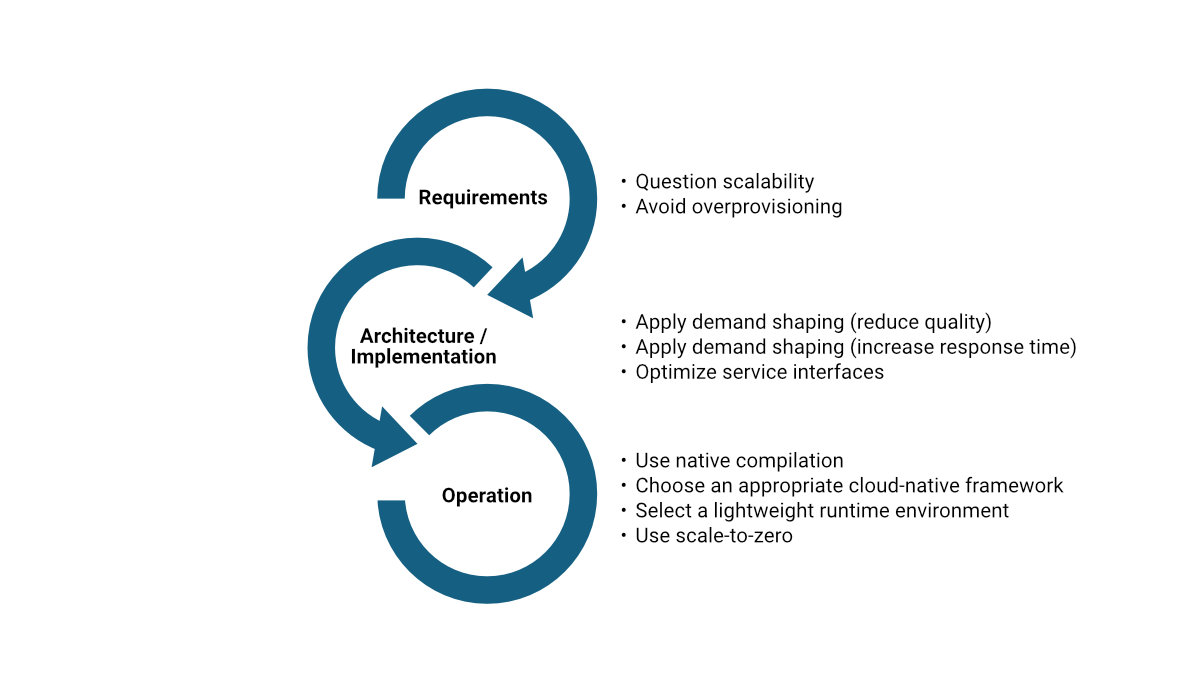When Software Heats Up the Planet
An Article by Gerhard Wanner
What we develop – and how we develop it – has a tremendous impact on the energy consumption of IT systems. Software architects can provide meaningful impulses toward greater energy efficiency through deliberate design decisions. While functionality, cost, and time have traditionally been the primary criteria when evaluating systems in operation, the climate impact criterion is becoming increasingly important. This article explores how climate protection and software architecture can be meaningfully connected.
How Software Architecture Can Reduce the CO₂ Footprint
The climate crisis is a pressing issue. The IT industry significantly contributes to global CO₂ emissions: various studies [1] yield different results, but estimates for 2020 range from 2.1% to 3.9% of global CO₂ emissions attributed to data centers. Research also suggests that energy consumption will continue to rise, driven primarily by increasing digitization and artificial intelligence. As a result, the project management triangle for software development is evolving to include a new constraint: in Climate—alongside in Budget, in Time, and in Functionality.

Figure 1: Estimated share of ICT in global CO₂ emissions. Based on [2]
The Role of Software Architects
With their expertise and experience, software architects bear a significant responsibility – one that goes well beyond the traditional requirements of software architecture. The following areas are crucial to reducing CO₂ emissions in IT projects:
Requirements:
Not every functional requirement is strictly necessary – some are even disputed among stakeholders. Reprioritizing or rejecting requirements based on sustainability and availability considerations is one way to improve energy efficiency. It’s easy to let services run continuously or deploy them across multiple cloud regions to ensure low response times. But is this truly necessary? Do all services need to be available 24/7 and worldwide? By identifying actual usage needs and adjusting active services accordingly, significant energy savings can be achieved.
Architecture/Implementation:
Software can be implemented in energy-efficient or inefficient ways. Architectural and design decisions directly affect energy efficiency. The goal is to find a solution that satisfies quality requirements while minimizing CO₂ emissions.
Architectural styles also play a role. Microservices have clear advantages, such as enabling horizontal scalability – but is this always needed? In many cases, a more energy-efficient modulith (modular monolith) might be better suited to the same requirements. Can we combine both styles and only use microservices where scalability is truly necessary?
Operations:
Even software designed with energy efficiency in mind can lose its benefits during operation. Examples of sustainable operations include: maximizing hardware utilization, limiting operating hours, deploying in regions with high shares of renewable energy in the power grid, and shutting down unnecessary services.
Redundancy:
Redundant services with high availability requirements consume additional resources, which increases energy demand. Instead, small services that can be restarted quickly offer a viable alternative – providing comparable behavior with far less resource consumption.
Energy Efficiency as a Quality Attribute
Energy efficiency is an emerging quality that must be balanced with other system characteristics. Figure 2 illustrates how scalability-related architectural decisions can influence this balance. [3]

Figure 2: Possible architectural decisions for scalability
You Can’t Manage What You Don’t Measure
All the aforementioned fields require the expertise of software architects. But to make informed decisions, we need reliable data. Measuring and monitoring CO₂ emissions is essential – without it, any form of optimization becomes questionable.
However, accurately measuring a software system’s actual emissions is difficult or even impossible, as emissions depend on many factors, such as: local electricity mix, time of day, or even the weather.
That’s why proxy metrics are often used – indicators that correlate with CO₂ emissions. Examples include system energy consumption or cost (e.g., in cloud environments, lower resource usage typically leads to lower costs). Understanding and using tools provided by cloud providers to monitor one’s own systems must become a core competency for software architects – as well as using tools to measure workload energy [4] consumption or estimate CO₂ emission efficiency [5].
Software Architects as Multipliers for Green IT
Because of their central role, software architects act as multipliers within projects and organizations. They can bring Green IT into the spotlight and inspire everyone involved to develop and operate energy-efficient and low-carbon software.
The climate crisis won’t wait: it’s up to us, the software architects, to make in Climate a standard requirement.
Sources:
[1] Roussilhe: Explaining the environmental footprint of the digital sector, https://gauthierroussilhe.com/en/articles/explaining-the-environmental-footprint-of-the-digital-sector, 2021
[2] Belkhir, Elmeligi: Assessing ICT global emissions footprint: Trends to 2040 & recommendations, Journal of Cleaner Production, Volume 177, March 10, 2018, Pages 448–463
[3] Wanner, Kutschera: CO2-Emissions-Effizienz trifft auf Qualitätsmodell, ITSpektrum 5/2024
[4] Kubernetes Efficient Power Level Exporter (Kepler), https://sustainable-computing.io/
[5] Cloud Carbon Footprint, https://www.cloudcarbonfootprint.org/
Author
Prof. Dr.-Ing. Gerhard Wanner (wanner@hft-stuttgart.de) has over 30 years of experience as a consultant and software architect, and more than 20 years as a professor of computer science at HFT Stuttgart, focusing on software engineering and architecture. Green IT is his passion – in research, as an author, and in teaching.





